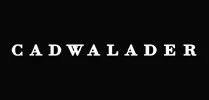- with Finance and Tax Executives
The Board of Governors of the Federal Reserve System ("FRB") requested comment on three proposals designed to improve the transparency of its stress testing procedures.
One proposal would provide for enhanced disclosure of the models used by the FRB in its supervisory stress tests including:
- Additional detail on the structure of a particular model in addition to key loan characteristics and macroeconomic variables that influence the results of the model.
- Modeled loss rates on groups of loans with distinct characteristics, as well as summary statistics associated with the loans in each group. This will allow firms to compare characteristics of their own portfolios to those of the aggregate portfolio for all firms that are stress tested.
- Portfolios of hypothetical loans and the estimated loss rates associated with the loans in each portfolio.
The FRB also requested comment on a proposed policy statement detailing the FRB methodology and framework for stress testing. The FRB described the "principles, policies, and procedures" that contribute to the supervisory stress test model development process.
Finally, the FRB proposed modifications to its policy statement on the scenario design framework. These modifications are intended to "enhance the counter-cyclicality and transparency" of the scenario design framework. The modifications would:
- In the severely adverse scenario, include more specific guidance for the change in the unemployment rate when the stress test is conducted during a time when the unemployment rate is already elevated.
- In the severely adverse scenario, include guidance for the path of the nominal house price index.
- In the adverse and severely adverse scenarios, incorporate stress to funding markets.
Comments on all of the proposals must be received by January 22, 2018.
The content of this article is intended to provide a general guide to the subject matter. Specialist advice should be sought about your specific circumstances.


